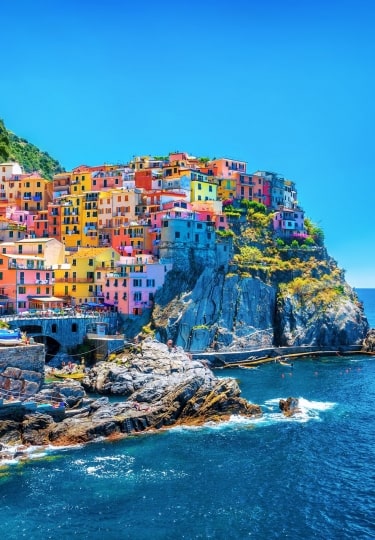Italy in the summer is magical, from the pop of the buildings’ pastel shades and the allure of the ocean rippling at the end of steep village lanes to the silhouetted belltowers tolling against a crisp blue sky.
Summer in Italy is the time of year when this country turns from fantasy into fantastic reality—even the gelato tastes brighter.
Gorgeous Weather
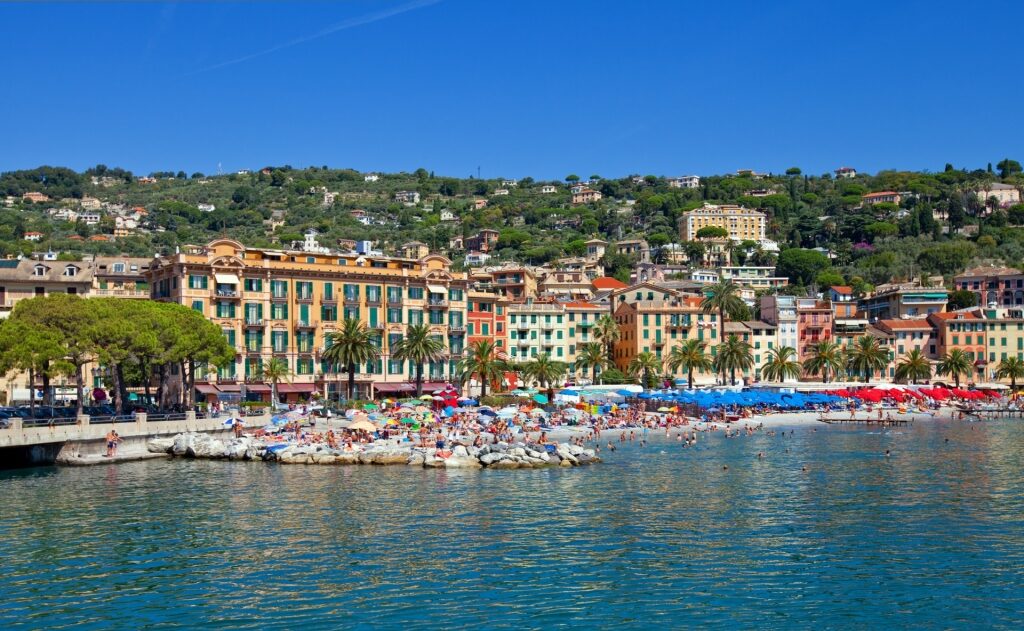
Santa Margherita
The first thing to know is that, during the Italian summer, rain showers that emerge to dampen your plans are few and far between.
The plants and produce flourish beneath the cascading rays, from the magenta bougainvillea of Santa Margherita to the grapevines woven into the flanks of volcanic Mount Etna. It’s just another reason why this country is so popular in the warmer months.
Highs of 77°F (25°C) in June warm the pebbles of the beaches on the Italian Riviera. Travel south and the temperatures become even more favorable. By August, most Italian regions have seen daytime temperatures climb towards 86°F (30°C).
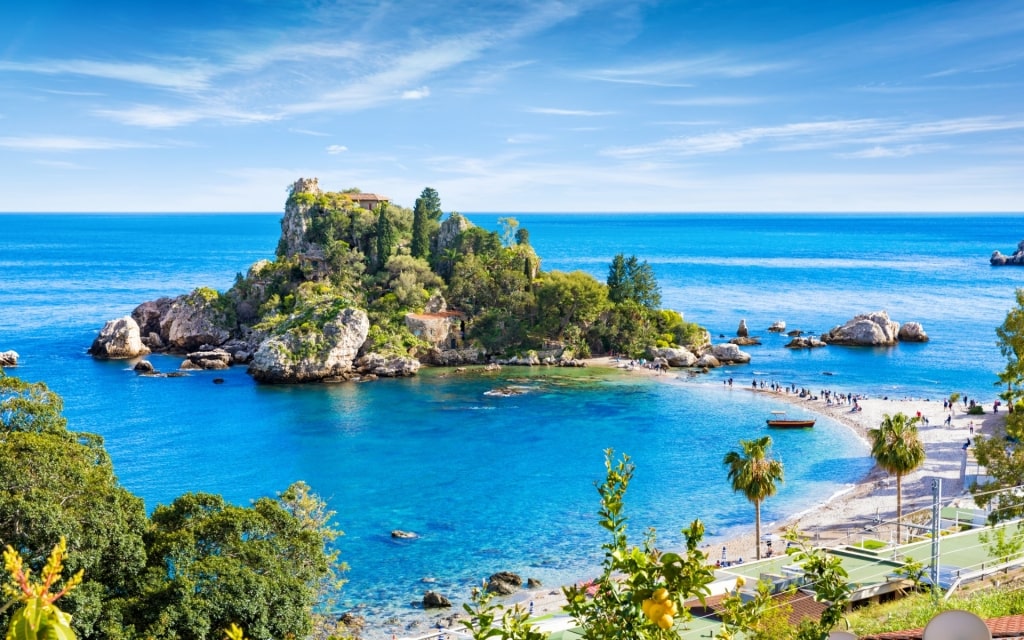
Isola Bella, Sicily
In Sicily in June, the mercury has already risen as high as 84°F (29°C), offering perfect conditions for swimming in the sea off the gorgeous Isola Bella beach.
In August, named, of course, for Augustus Caesar, the first Roman emperor, the cities empty as Italy goes on vacation and everybody heads to the beach.
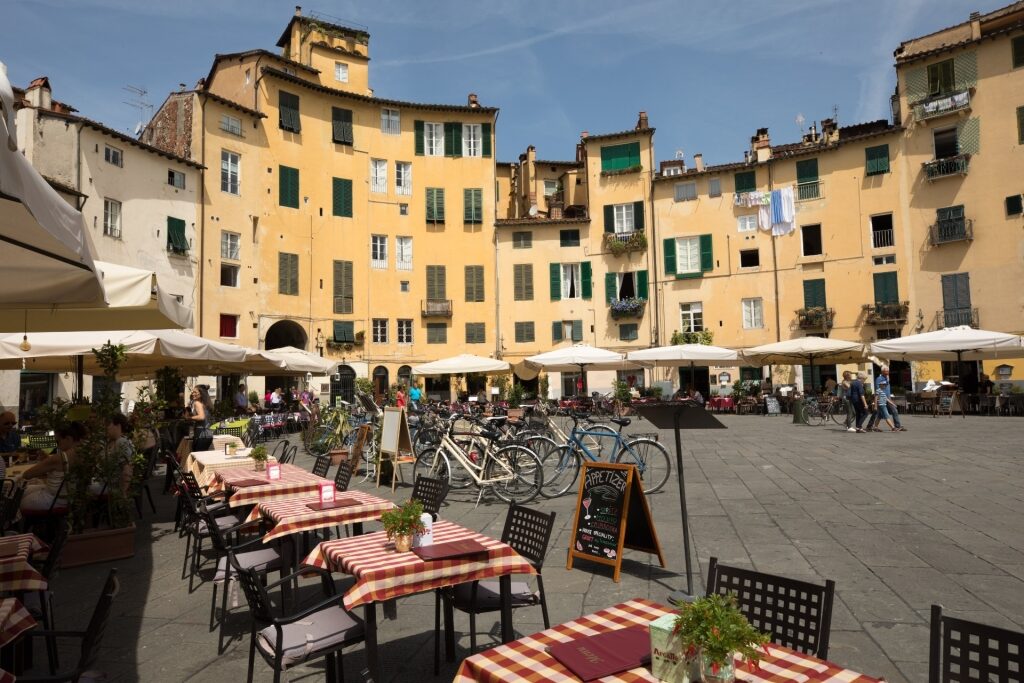
Lucca
With fierce highs in Rome, the nearby beaches of Ostia and Sperlonga are flooded with Romans seeking a cooling coastal breeze.
In Tuscany’s beautiful city of Lucca, the temperatures are much the same, although the grassy park lining the historic center’s medieval walls sees soft, refreshing breezes.
Sunny Beach Days
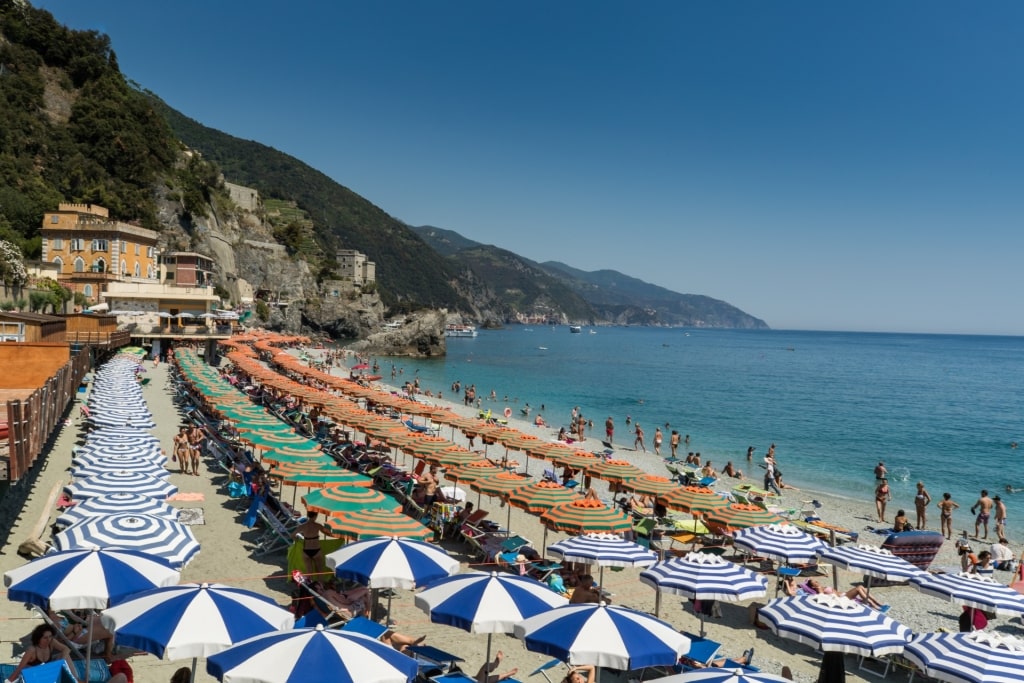
Monterosso al Mare, Cinque Terre
Come summer, the Italians pack mozzarella and pesto paninis into their beach bags and make a beeline for the coast. Their narrow country means that, for most, a trip to either the azure Adriatic or the tempting Tyrrhenian is never too long a drive.
While a beach may be the destination, it’s fair to say that not all beaches in Italy are the same. And it isn’t just a matter of pebbles or sand, or waves versus tranquil seas.
You’ll find that, to a greater or lesser degree, much of the sand along Italy’s nearly 5,000 miles of coastline is divided between stabilimenti balneari–beach clubs–and spiaggia libera, or free beaches.
The stabilimenti supply that classic image of Italian beach life—one of regimented ranks of lounge chairs, each beneath its own colorfully striped umbrella, the colors denoting the territories of competing beach clubs.

Monterosso al Mare, Cinque Terre
For a fee, these beach clubs provide everything you require for a great day at the beach, from toilets and showers to Peroni and lifeguards. Prices vary hugely depending on where your stretch of sand is located.
Expect to pay a premium in high-profile spots like Paraggi Bay, near Portofino. Often, Italians will reserve a lounge chair for the entire summer season, creating a small social pocket for themselves on their favorite beach.
Those who’d prefer not to pay to go to the beach can unroll their towels in the spiaggia libera, the free beaches.
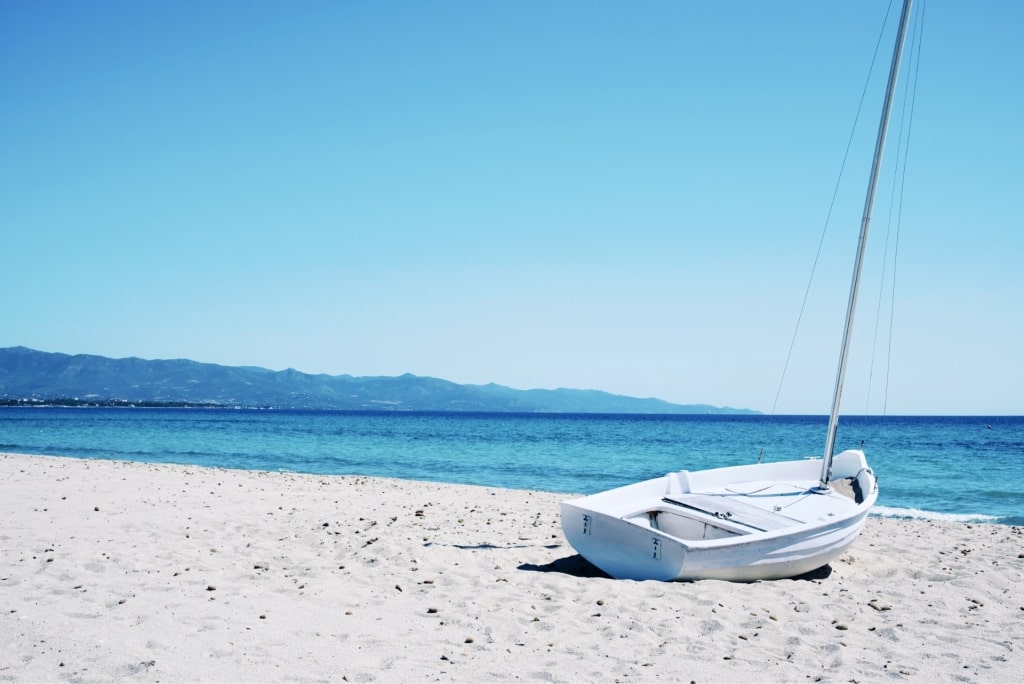
Poetto Beach, Sardinia
Entire beaches can be spiaggia libera, a phenomenon more common in more remote areas, or you’ll find free areas sandwiched between the parasols of the beach clubs. What facilities are available depend on where you are, with public-use toilets and showers usually available at beaches close to towns.
You’ll find both kinds on the island of Sardinia—a favorite staycation destination for Italians with its countless sugar sand beaches. This rugged, Mediterranean island is home to many of Italy’s most beautiful beaches, some only accessible by boat, the sand often fringed by shady strawberry trees and fragrant pines.
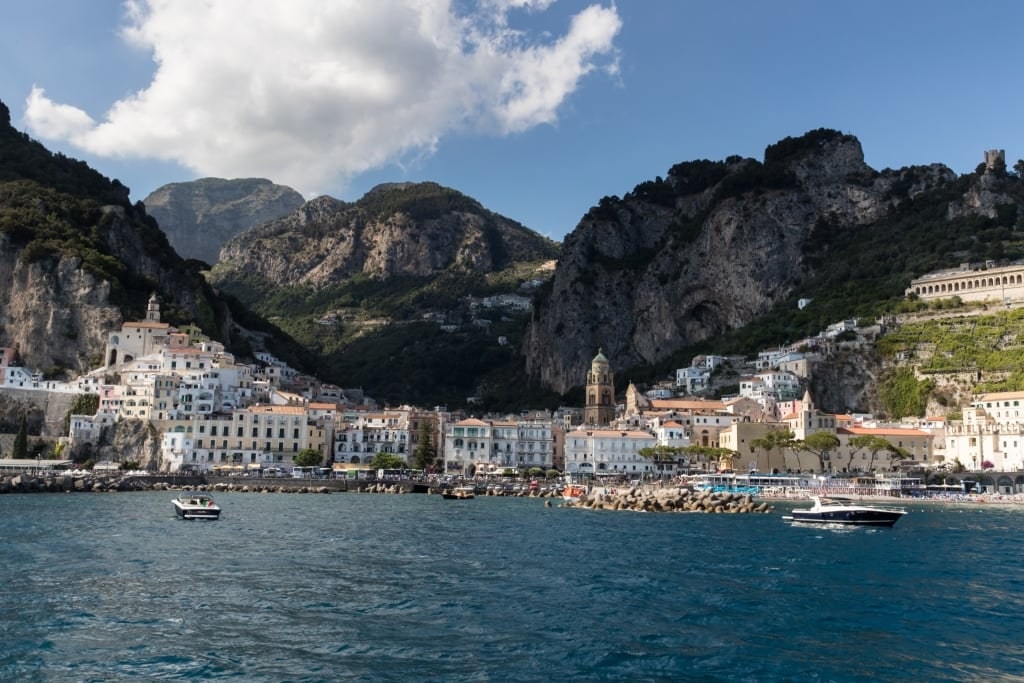
Amalfi
Another fantastic summer seaside spot is the Amalfi Coast, a short drive south of characterful Naples. This UNESCO-listed strip of mountainous coastline sees day-trippers arrive to have their feet measured for the region’s famous handmade sandals, or to dance the night away in waterfront nightclubs.
The Amalfi Coast’s Positano Beach—where the bikini was introduced to Italy in the 60s—is an iconic destination here. Of course, private clubs dominate the pebbly beach. For a less crowded experience, many travel south to Maiori Beach—Amalfi’s largest swathe of sand.
Read: Best Beaches in Naples, Italy
Summer Style
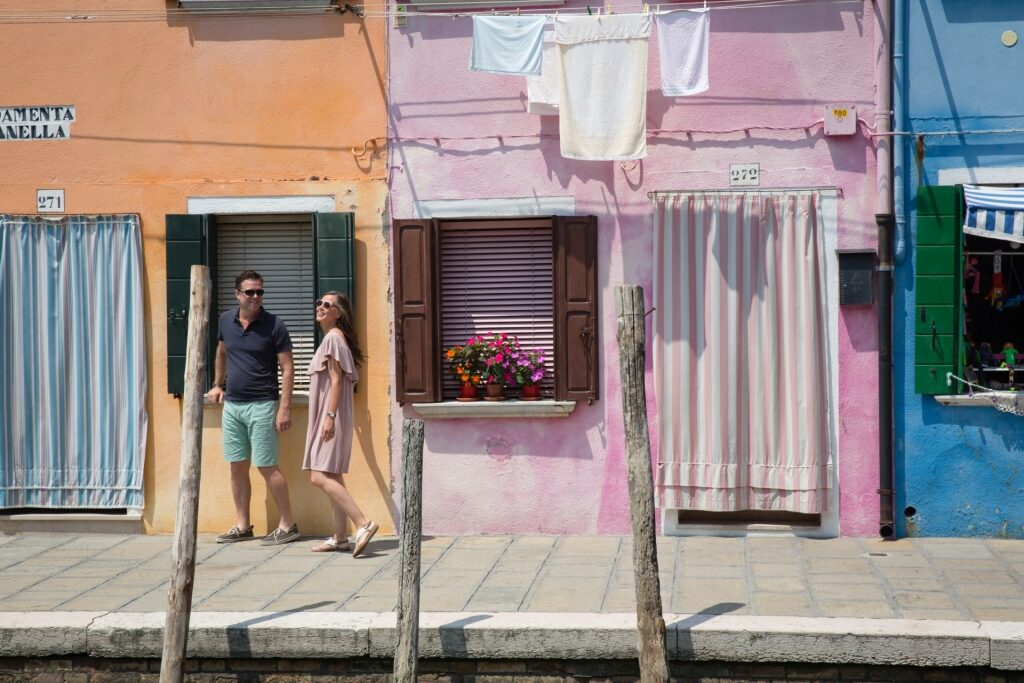
Burano, Venice
Italy in the summer is awash with easygoing, flowing styles. Arriving in Rome, it might feel as if a statement handbag, vintage-inspired sunglasses, and vibrant prints are the national dress. And, on some level, they are. However, you’ll soon discover that Italian fashion is a broad church.
With a little fine tailoring and the choice of lightweight, breathable materials like silk and linen, and you’ll fit right in.
Most Italian cities, such as Naples, are also centers of outstanding bespoke tailoring. Drop in somewhere to get measured up and receive your shirts when you arrive home, ready to add a splash of Italy in the summer to your neighborhood.
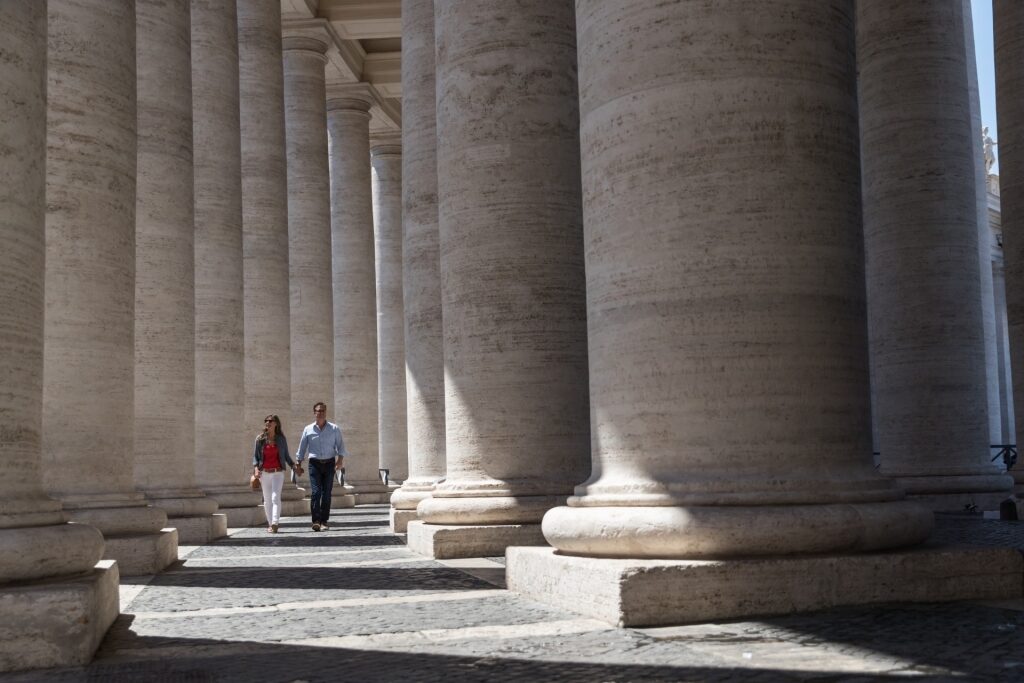
Vatican City
Amid all these senses of unbridled fashion lie some hard and fast social rules. Most well-known is the modesty required when entering a church or some other place of worship—think covered knees and shoulders, no sheer fabrics or hats, and ideally closed-toe shoes.
The Italians have a similar reverence for dinner and dress accordingly. So while lunch is a more relaxed affair, you’ll find shorts and sandals are left at home in the evening and blazers and more conservative dressing in general are in vogue.
Major Sites Open for Longer
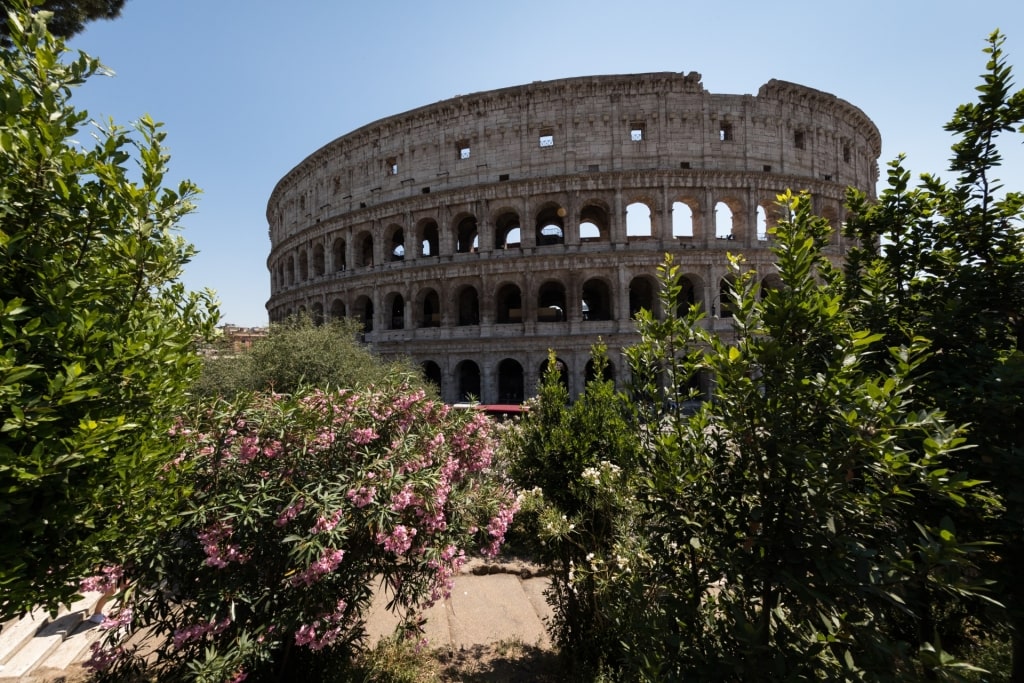
Colosseum, Rome
One of Italy’s great treasures is its wealth of fascinating historical sites. While most often a window into the Roman era, there is also a prodigious open-air collection of well-preserved ruins and remnants from Neolithic times onward.
In summer, with the footfall rising, many of the major heritage sites in Italy extend their opening hours. A general rule of thumb is that from the end of March to the end of September, the opening hours stretch into the evening for a couple of hours more than they do in early spring and winter. However, it’s always best to check the website before visiting.
For example, the Colosseum in Rome, starting from the last Sunday in March, opens at 8:30 am and closes at 7:15 pm. Before this, closing is at 5:30 pm. These hours persist until the end of August, when they begin to creep back as the hours of sun dwindle.
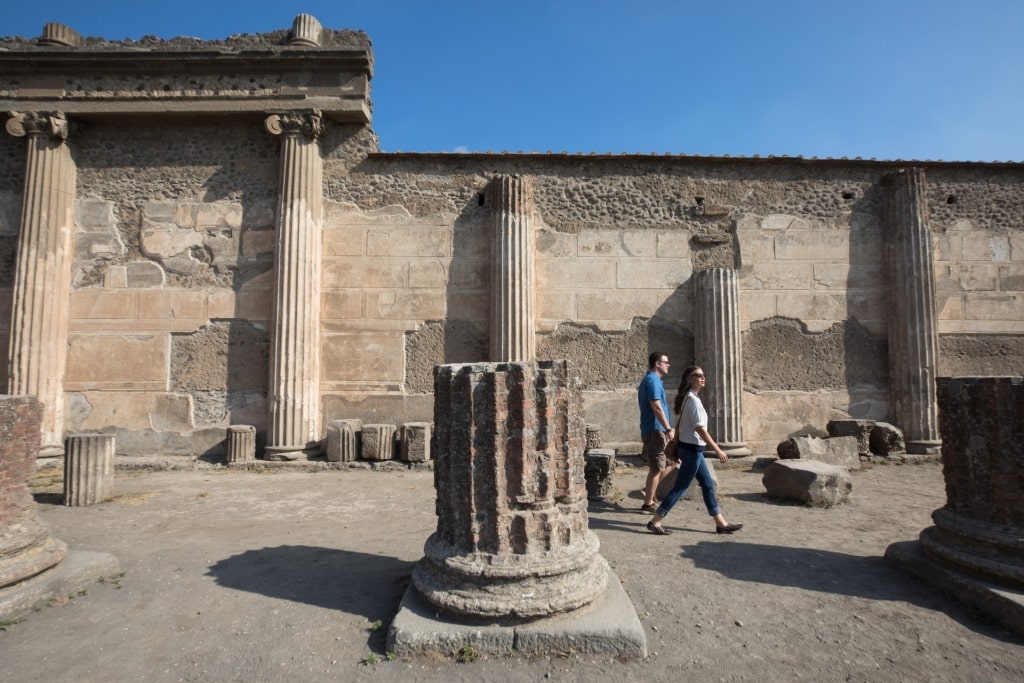
Pompeii
Italy’s second most visited archaeological site, Pompeii, also extends its opening hours, albeit in a more simplified fashion. From April 1 to October 31, the entry is between 9 am and 7 pm. Outside of this window, it reverts to 9 am to 5 pm.
Also, be sure to check the website to find out when the last entry is to any site you’re thinking of visiting. With Pompeii, for example, the last entry is always an hour and a half before closing.
Festivals & Events
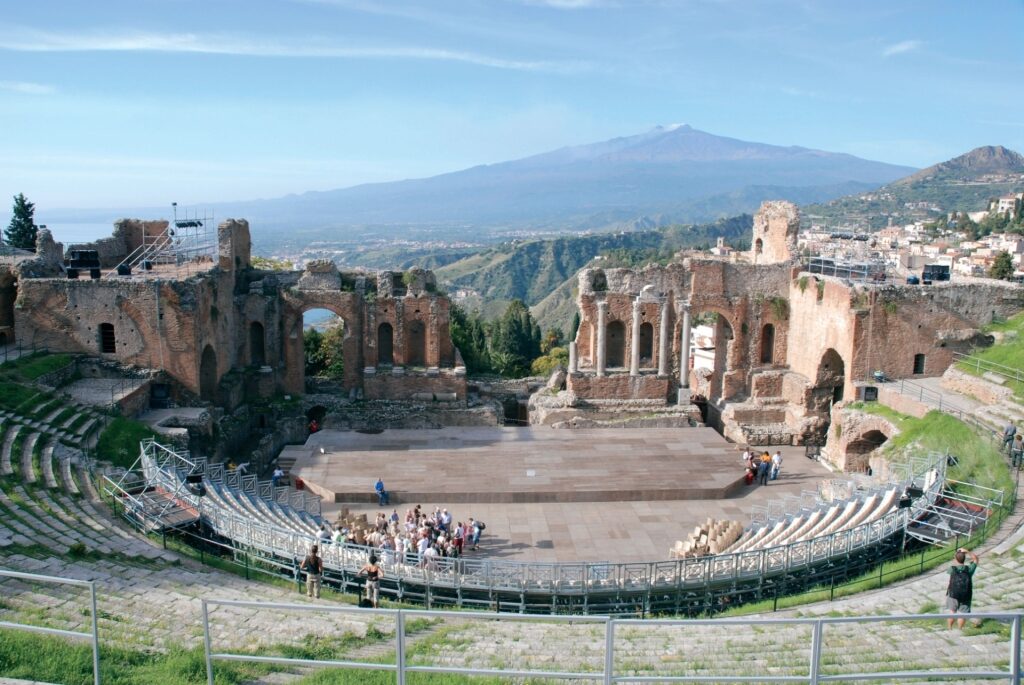
Greek Theater of Taormina, Sicily
Italy in the summer is a brilliant time for festivals and events; these colorful goings-on are imbued with all the enthusiasm and tradition for which Italians are famous.
With the summer delivering such reliable weather, the Italians do not hesitate to take advantage of their country’s most scenic backdrops for cultural events. In Taormina in June, the resort town organises a film festival—the country’s longest running—that sees films screened amid the high-altitude surroundings of its third-century Greek Theater.
Head north, and you’ll find yet more culture set against spellbinding scenery. The Portofino Summer Opera takes place in July, with operatic trills bouncing off the pastel architecture of Liguria’s iconic fishing village.
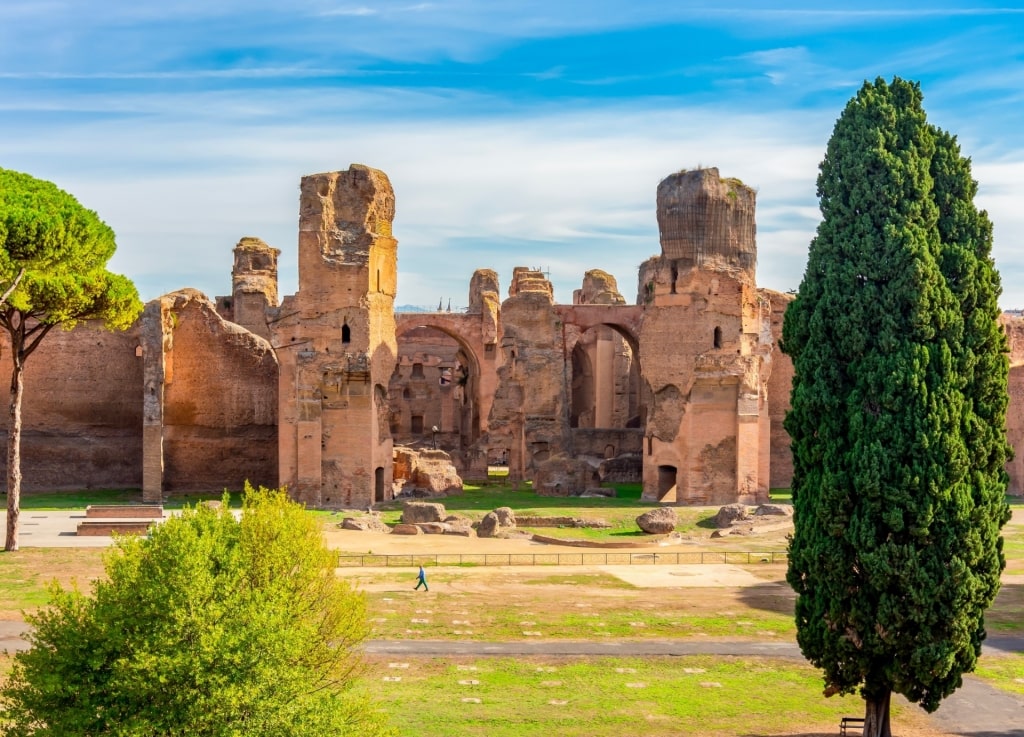
Baths of Caracalla, Rome
Not to be outdone in the Eternal City, you’ll find operas, often by Verdi and Puccini being performed amid the Baths of Caracalla, with performances throughout the summer.
The Roma Festival Barocco is another major festival to look out for in the capital during June and July. Its premise is straightforward: classical baroque performances undertaken in some of the capital’s most awe-inspiring baroque venues.
Travel south to Naples and Positano, and you have a choice between summer celebrations centered around pizza, jazz, and theater. Italy in the summer is never dull.
Seasonal Cuisine

Sorrento
As warm, lingering evenings roll in with the summer season, the outdoor terraces of restaurants resound with the hubbub of Italy’s famously convivial dining culture. Whether you’re splitting a creamy burrata in an atmospheric side street in Rome’s Trastevere or sipping limoncello on a veranda in the Cinque Terre, dining in Italy in the summer is hard to beat.
With such abundance in its seas, summertime menus overflow with seafood specials, as well as refreshing starters. Think bruschetta doused in flavorsome olive oil, caprese salads, or grilled octopus.
The country’s chilled white wines pair perfectly with the cuisine, with varieties including Vermentino, Pinot Grigio, and lesser-known delights such as Arneis.

Barbecued lamb
Italian regions also have their seasonal specialities. Amid the olive groves and white-washed masserie of southern Puglia, the evening air is fragranced by the smell of barbecued lamb.
This recipe, which good restaurants throughout the country will attempt to copy, is simply prepared with rosemary—a holdover from the ancient Greeks who imported the style to these shores.
The hunting of swordfish in the Messina Strait during the summer is another ancient practice that has changed little over the centuries.

Swordfish
The vigorous fish migrate to the region to lay their eggs near the volcanic Aeolian islands. Between May and September, the fishermen pursue them in traditional felucca boats fitted with a high mast from which a spotter finds the fish. The swordfish are speared with a two-pronged lance, a design that hearkens back to the ancient Greeks.
On both sides of the strait, this magnificent fish is enjoyed in a variety of preparations. From a Sicilian perspective, one of the most famous is involtini di pesce spade. This Italian dish sees juicy slices of swordfish rolled around a parsley and garlic-flavored crumb.
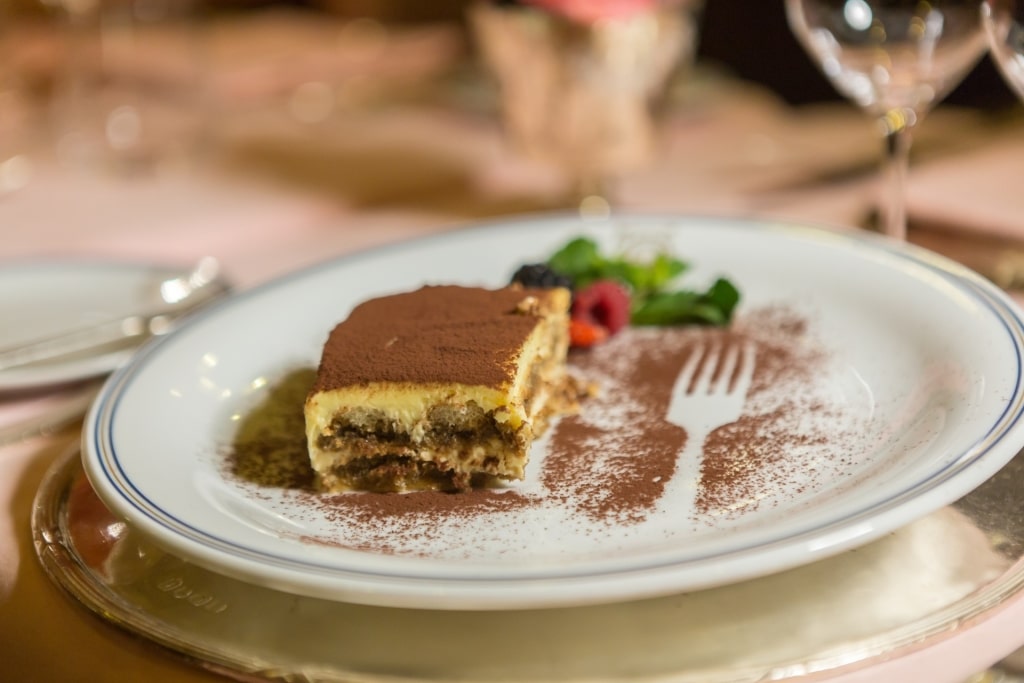
Tiramisu
Summer meals in Italy are perfectly rounded off with the creamy coolness of a tiramisu, a dessert that comes into its own in the warmer months. If there isn’t enough caffeine in the tiramisu, Italians typically follow up their dessert with an espresso.
In the summer, a common digestif that you’ll be offered is a shot of chilled limoncello. This zesty firewater is, of course, best enjoyed in the coastal town of Sorrento, close to where it was first conceived.
Gelato & Granita
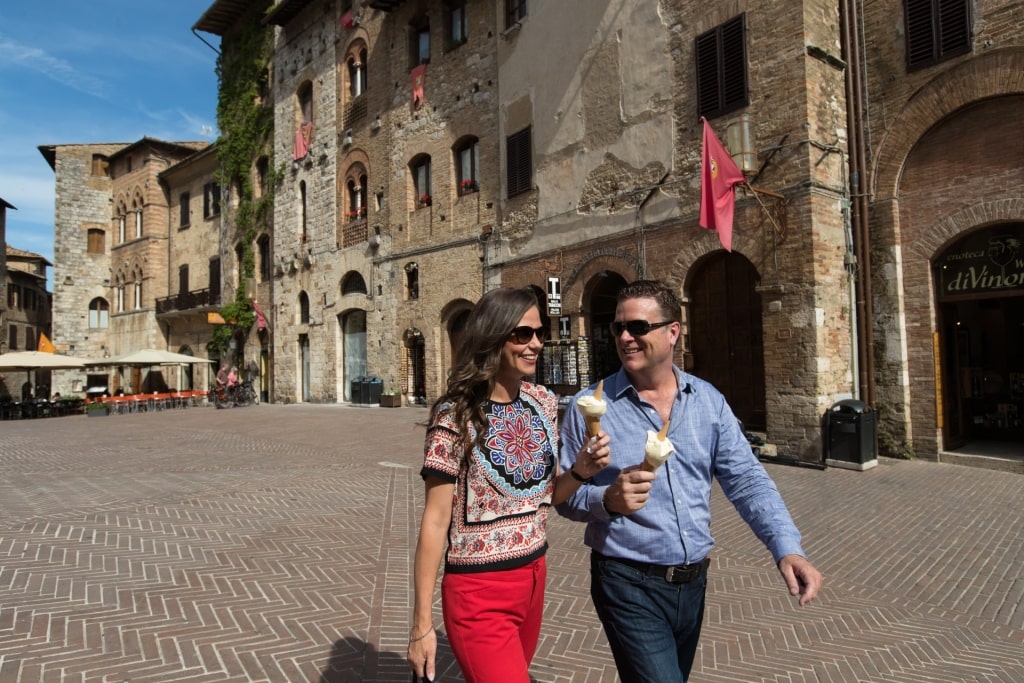
Gelato
Adding a pointillist dimension to the Italian summer are the countless scoops of gelato that the Italians gorge upon for enjoyment and to beat the often scorching temperatures.
Ice cream beneath the summer sun is hardly unique; however, the quality of their product, made with less cream than ice cream and churned more slowly for a richer texture, is distinctive.
The classic gelato flavors you can count on encountering throughout Italy include pistachio, hazelnut, lemon, and, of course, coffee. However, la cucina Italiana can be experimental and daring. So risk those unusual variations, such as creamy gorgonzola, basil, best paired with a scoop of lemon, and even salt-sprinkled olive oil-flavored scoops.

Granita
Across the Tyrrhenian Sea to Sicily, and you’ll find that the breakfast of choice in the often record-breaking summer heat is a scoop of flavored ice. Granita is a kind of chunky sorbet most often served in almond, peach, and lemon flavors before being topped with a brioche bun. Across the Messina Strait, you’ll find that some cones of gelato also don a brioche.
Temperature-Controlled Museums
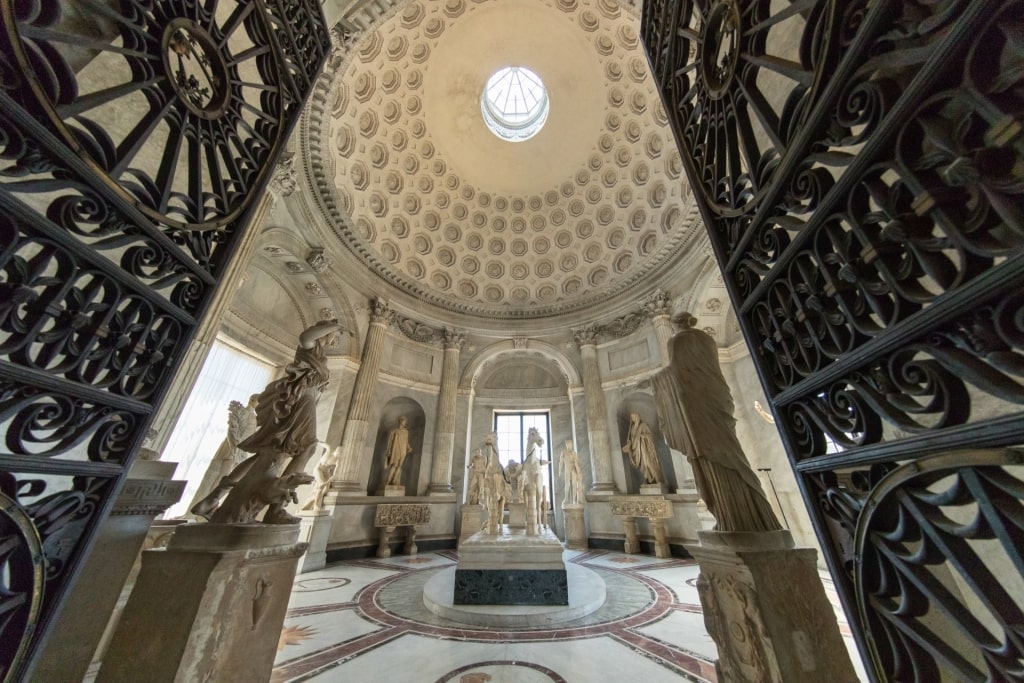
Vatican Museum
Italian cities like Rome and Florence are essentially vast open-air museums. Their piazzi are ornamented with creamy marble masterpieces and lined with architecture that fills the pages of books about the history of architecture. However, Italy in the summer can be very warm.
Beneath the searing midday sun, even your stalwart travel hat might begin to feel like it’s melting. On days like these, it’s best to schedule a visit to the shady, low-humidity, temperature-controlled interior of one of Italy’s major museums.

Uffizi Gallery, Florence
These include the Uffizi Gallery in Florence and the Vatican Museums in Rome or, technically speaking, Vatican City. Both are filled with enough art and culture to last out a fierce summer afternoon’s sun.
Or perhaps you’ll make a run for the beach, seeking to cool off beneath the translucent breakers. Well, in the summer, it’s possible to do both cooling off and culture in a single day.
Late opening hours occur at both of these museums, with the Vatican Museums usually open on Friday evenings throughout the summer period. Check the Uffizi’s website to find out about their occasional evening openings.
And once you emerge into the gentle evening heat, having gorged on the Sistine Chapel or the genius of Leonardo da Vinci, you’ll find it’s time for a refreshing aperitivo.
Things to Do in Italy in the Summer
Taste Wine in Sorrento

Sorrento
A resort town positioned on the spectacular Amalfi Coast, Sorrento is a word synonymous with summery Italian glamor. Positioned on its own craggy peninsula jutting into the Bay of Naples, Sorrento has long been visited by those looking for a memorable coastal escape. It’s also famous for its lemons and zesty limoncello production.
Less well known, however, is that the area also produces superb wines—the perfect accompaniment for Sorrento’s restaurant terraces’ far-reaching views.
Sorrento, one of the most beautiful cities in Italy, is hemmed in by nearby vineyards, their grapes taking advantage of the blissful Italian climate. Some vines also have their roots plunged into the rich volcanic soil of Vesuvius, making for an irresistible vinification combination. A wine not to miss is Lacryma Christi—a blend that archaeologists have proven is the closest modern equivalent to what the Ancient Romans would have uncorked.
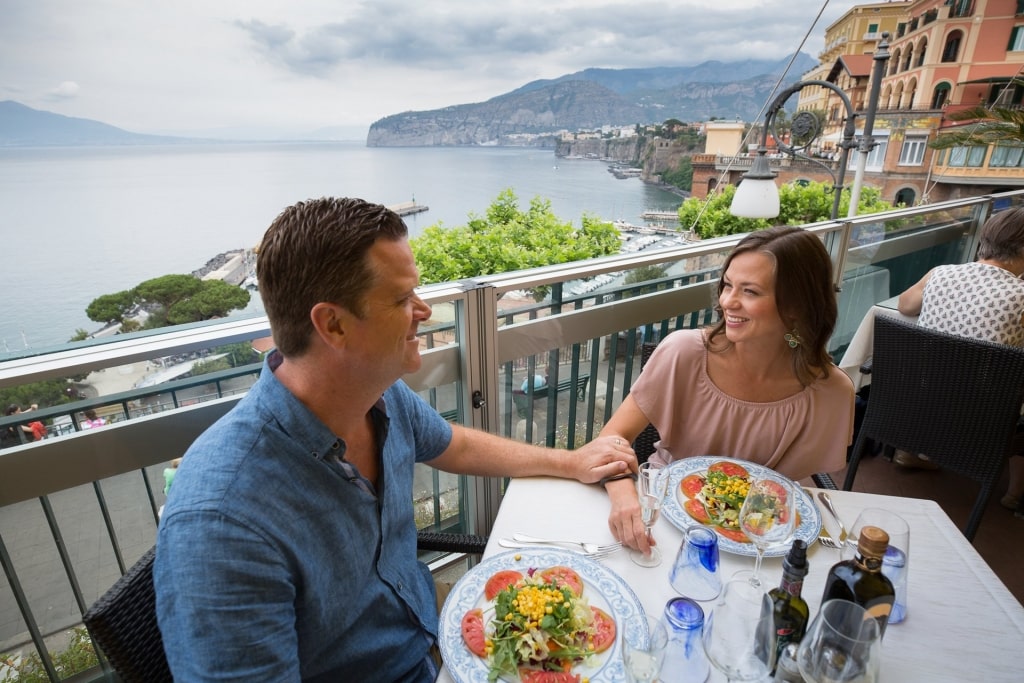
Sorrento
Sample it at the source with a vineyard tour or while touring the town. Afterward, browse the stylish Italian tailoring in Corso Italia’s boutiques while you soak up the laid-back atmosphere of Sorrento. Find your way through its colorful cobblestoned backstreets to the volcanic beaches and the cool shimmering sea.
Go for a Gondola Ride in Venice
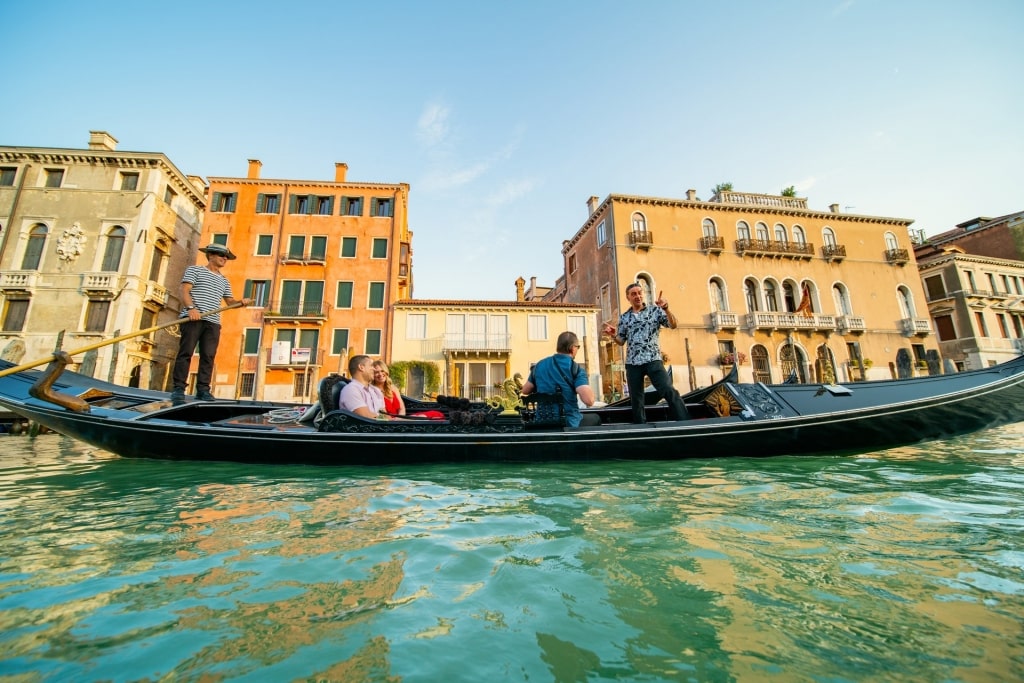
Gondola ride in Venice
Summer in Italy gets hot, so it’s best to always be near water. That’s easy advice to follow with Italy’s nearly 5,000 miles of coastline, but especially so in Venice, also known as ‘The Floating City’. Criss-crossed with a web of canals, the traditional method of navigating Italy’s most romantic destination is by gondola.
With the idea of romance so long entangled with this Venetian vessel, it can seem that gondolas were purpose-built for intimate cruises through serene waterways. Actually, these handsome crafts have been in existence since at least the 11th century. Their uses throughout history have been as eclectic as any humble rowing boat, while a team of gondoliers would have propelled the craft rather than a solo oarsman as there is today.
Being gently oared through this historic city on an elegant curving boat is a recipe for being lulled into a state of extreme well-being—little wonder a gondola ride has become seen as the apogee of romance in Western Europe. Throw in the gondolier’s Italian serenade and a rosy sunset, and you might consider emigrating.
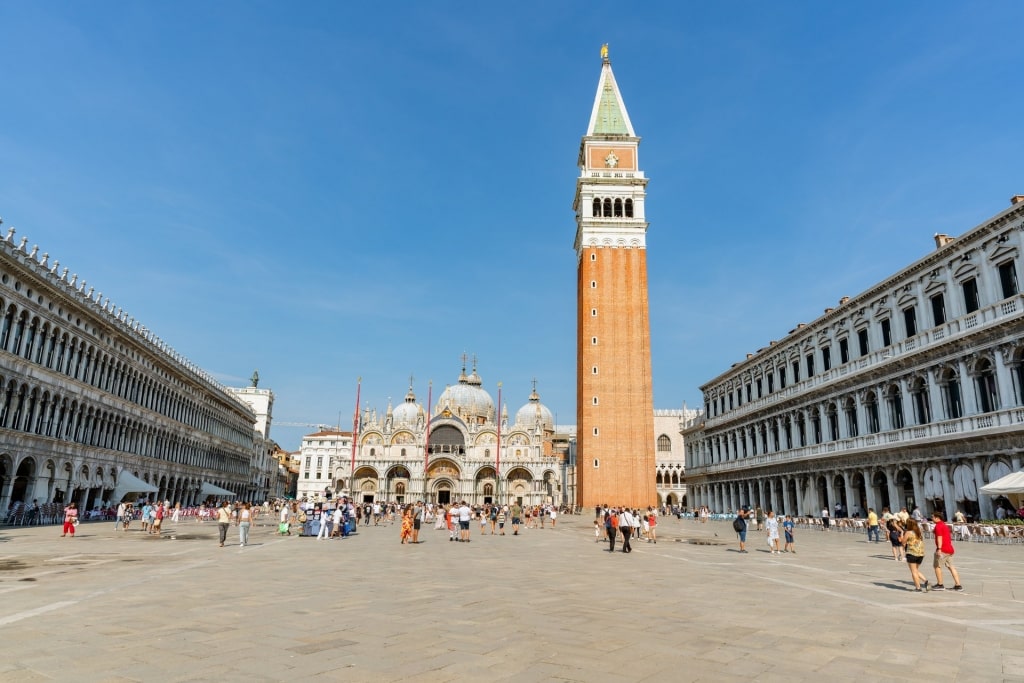
St. Mark’s Square, Venice
While there are few experiences that match touring this city by the water, be sure to leave the gondola at least long enough to find your way to St. Mark’s Square. This centerpiece of the city is bordered on one side by the extraordinary basilica of the same name, which is the symbol of this once-mighty empire’s wealth and pomp. At night, classical quartets serenade diners. It’s one of the more blissful evenings available in Italy in the summer.
Read: One Day in Venice
Explore Matera’s Medieval Alleyways

Sassi di Matera
Matera feels truly ancient. This Italian city found in the ankle spot of the Italian boot is one of the world’s longest continuously inhabited settlements. It’s no surprise when you see it in person—the city proper sited on a gorge pockmarked with doorways into the rock.
These doorways mark the Sassi, which are cave-homes carved into the limestone. Matera was once infamous for these almost neolithic cave-dwellings that, despite some remarkable Renaissance-era stonework, were sites of extreme poverty. The crisis was addressed in 1953 when the Sassi’s population of 16,000 were rehoused in another part of the city.
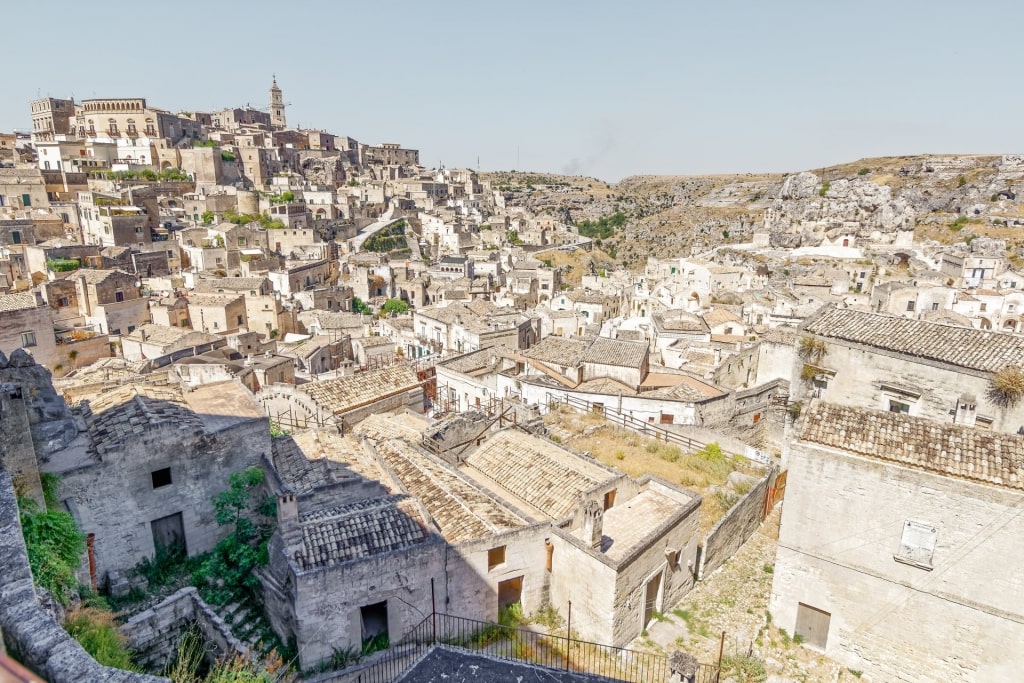
Casa-Grotta di Vico Solitario, Matera
Matera has since become a UNESCO World Heritage Site. Last year, its renaissance was completed with a turn as the EU Capital of Culture (it’s also become the location of a significant international literary festival). As for the Sassi, you can explore what life was like in these (without the livestock) in painstaking recreations such as that of Casa-Grotta di Vico Solitario.
Once you’re finished underground, it’s time to wander the timeless streets that Italy is known for. Matera offers a honey-colored maze of stairways and piazzas to explore, many with striking views across the sun-baked Mediterranean landscape. Get there quick before the city tops everyone’s must-see list when in southern Italy in the summer.
Feel Olympian at Taormina’s Greek Theatre
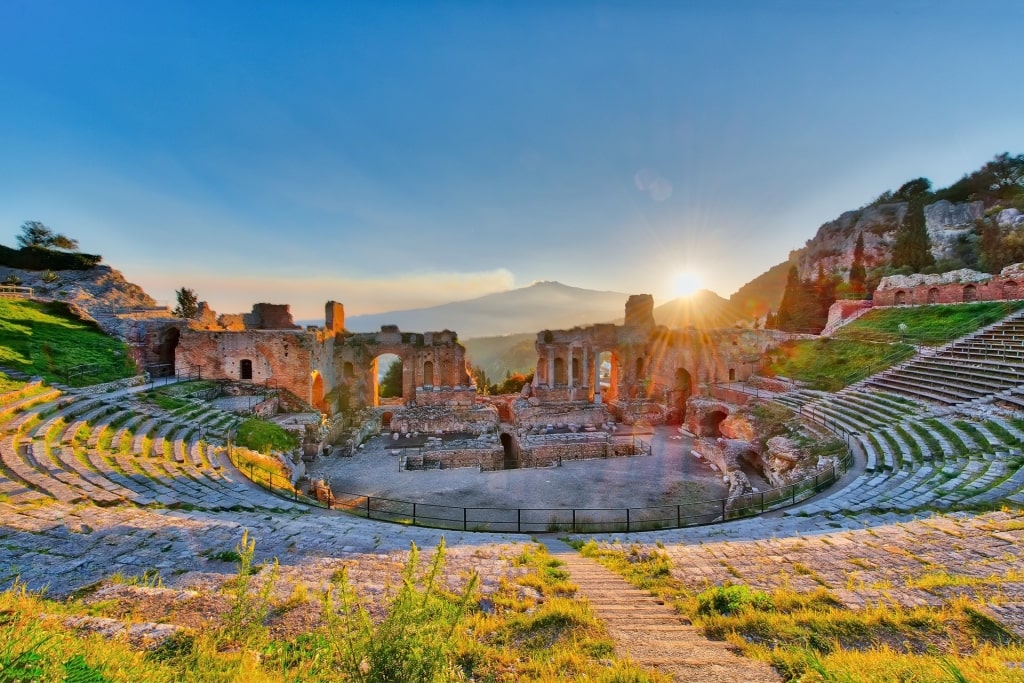
Greek Theatre of Taormina, Sicily
The coastal town of Taormina has long been a bolthole for those seeking a glamorous retreat along the sun-kissed coast of Sicily. A colorful jumble spread in the hills 70 meters above the deep blue Ionian Sea, almost every outlook in Taormina offers spectacular vistas. Some of the best are higher still, in its lofty Greek Theatre.
Carved into the hill-top, the Greek Theatre’s ambiance is akin to that of entering mythical Mount Olympus, making it one of the best places to visit in Sicily. You’re in the clouds, with distant sunshine breaking over the vast gentle slopes of Etna, the sight framed through the theater’s half-ruined stage. If you’re visiting between May and September, be sure to book a once-in-a-lifetime concert sitting in the antique stone seats.
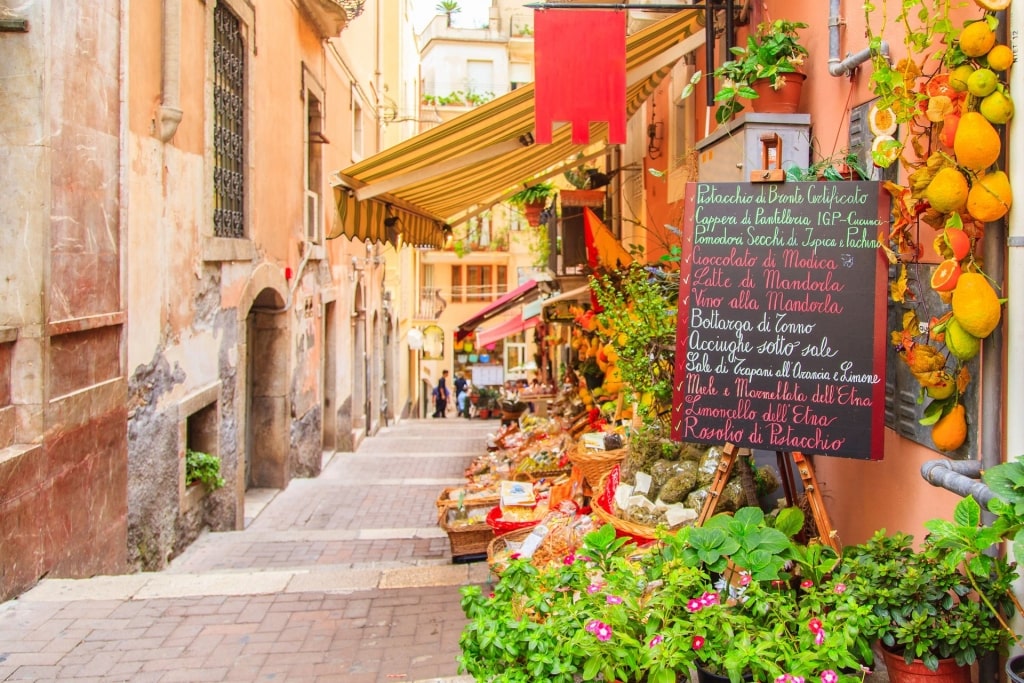
Taormina
Mortal life below in Taormina’s streets isn’t too awful either. It’s a wonderful place to explore its cobbled stairways lined with the scent of orange trees and high-street windows tempting with displays of delicious cannolis. Afterward, soak up the Sicilian summertime in the town’s ancient Piazza IX Aprile, with the swifts riding the updrafts rising from the ocean.
Find the Perfect Focaccia in Genoa

Focaccia
The city of Genoa sits plum in the middle of the “the Italian Riviera”. During the Belle Époque, summer in Italy was focused on this stretch of rugged hinterland and sandy beaches, with Genoa on most travelers’ itineraries.
It’s easy to see why, as this port city has a fascinating history. Once Italy’s most powerful republic, Genoa was also the birthplace of Christopher Columbus, not to mention its other well-traveled children: focaccia and pesto. It also has a dark heart: within its tall mustard and magenta-colored buildings is one of Europe’s largest medieval centers.
This warren of caruggi (the name for a Genoese alleyway) comprises antique shops, baroque palazzos, and marble-lined cafes, and makes for exquisite exploring. Taste artisan chocolate cast by machines dating back to the 1800s, dip into old shops selling shaving cream by weight, and be amazed by the dazzling frescos brightening up an old pasta shop. While you’re exploring, be sure to taste test the preferred local variety of focaccia bread that’s made with caramelized onions.
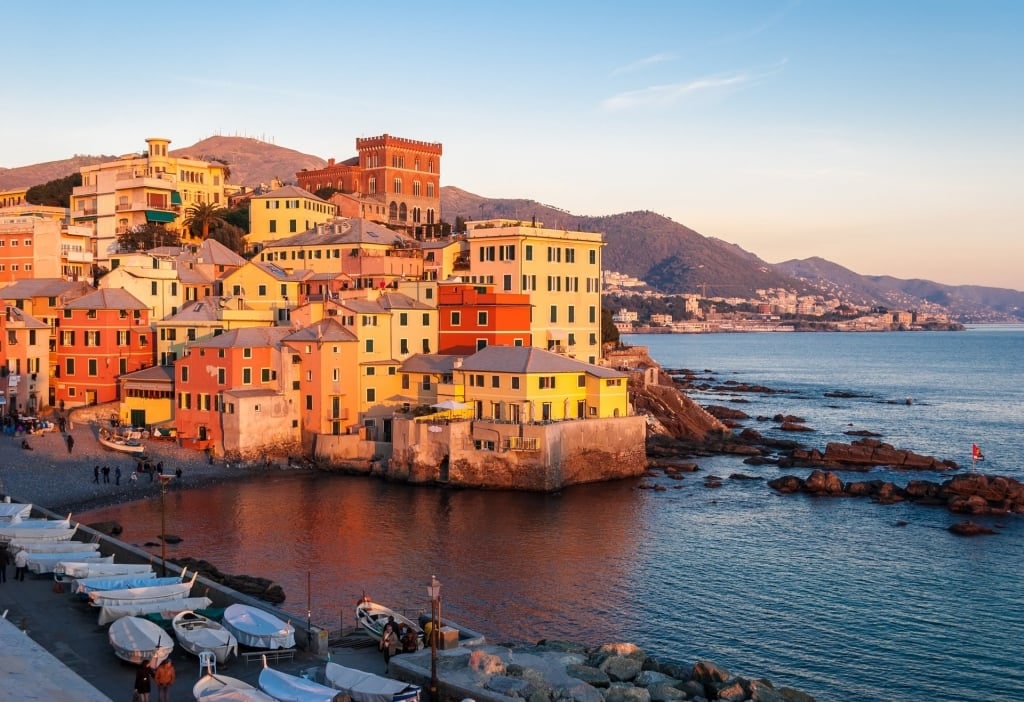
Boccadasse, Genoa
Once you’ve had your fill of the shady streets, follow the seaside promenade down to Boccadasse, a fishing village near the city center. Suddenly, you’re returned to the classic idea of Italian Riviera’s cities with the lapping jade and turquoise waves inviting you for a refreshing wade.
See the World-Famous Cinque Terre
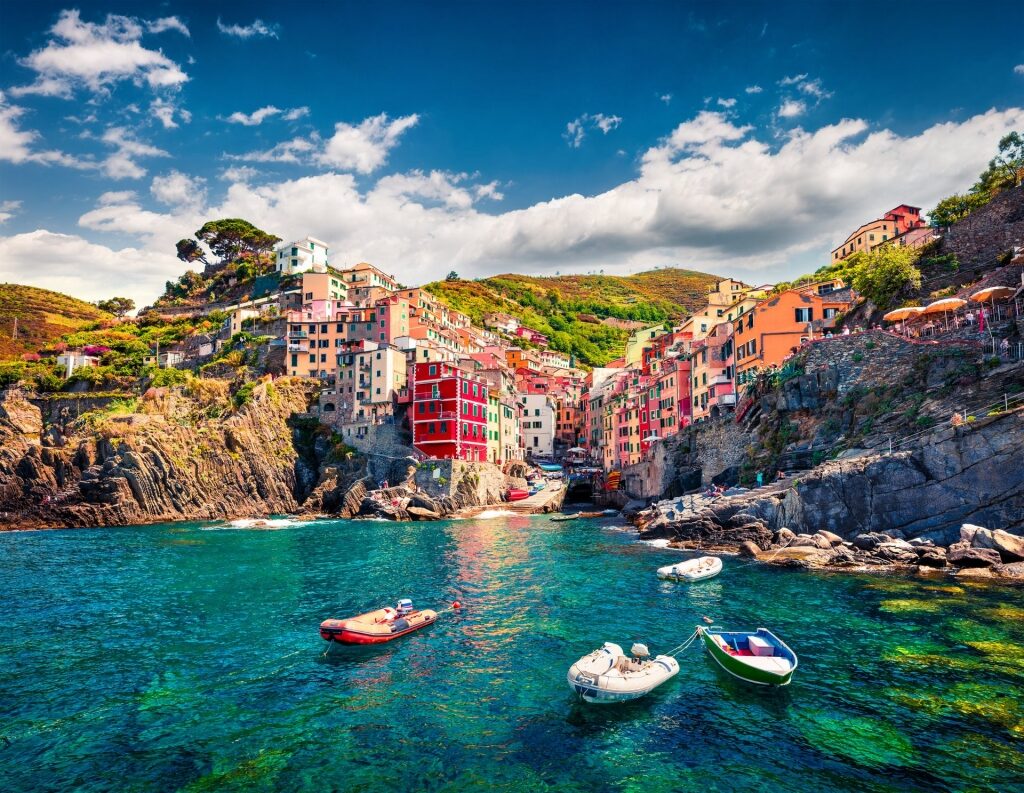
Cinque Terre
It’s a remarkable sight from the ocean—the five fishing villages known as the Cinque Terre, gaily bright while positioned on the imposing cliffs of the Ligurian coast. Now enclosed within a UNESCO-recognized national park, the Cinque Terre offers an exceptional example of what classic Italian architecture does so well: appearing to have sprouted organically out of the landscape on which it sits.
Of course, creating such astonishing architecture on difficult terrain takes time. In the case of the Cinque Terre, these settlements have evolved over the course of nearly a thousand years. Today, each of the villages—like an architectural Spice Girls—has its own style. Monterosso is the flashy resort town; Riomaggiore is a colorful, intimate canyon; and Vernazza, its cliffs strewn with cacti, is the one you might dream of moving to.
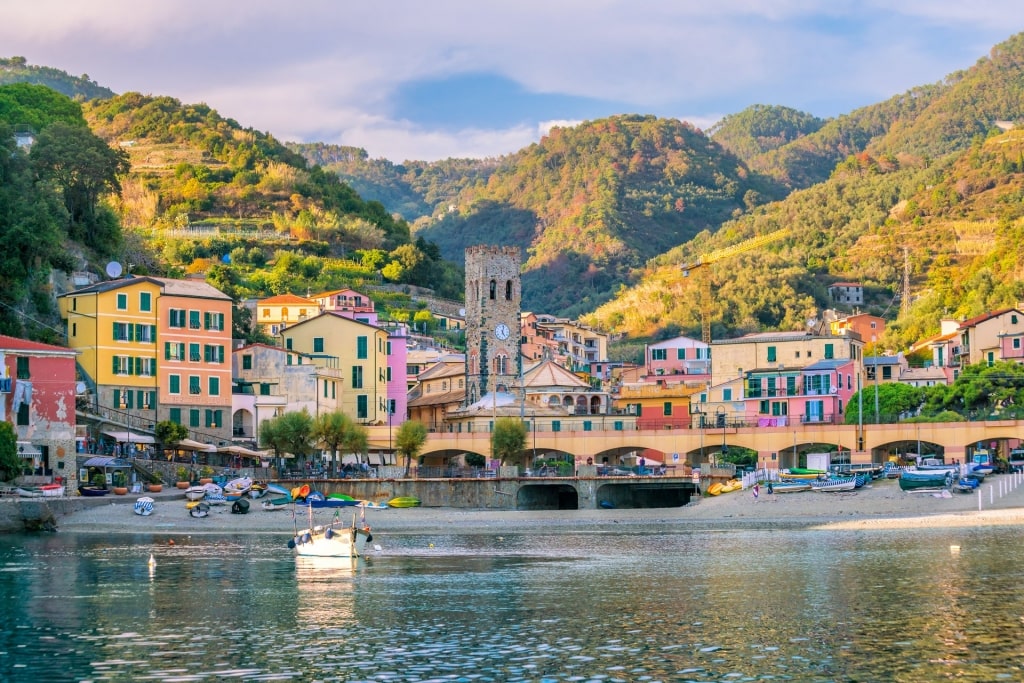
Monterosso
While it’s a fine perspective from the sea, walking it is one of the best things to do in Cinque Terre. Get down into those historic, flower-filled lanes, and discover what life was like among these tiny outposts wedged into this isolated stretch of the Italian Riviera. While you walk the interlinking footpaths, consider how this area had no train line until the unification of Italy towards the end of the 19th century.
Visiting, you’ll find another essential side of Italy in the summer. Once you’ve marveled at the near-vertical vineyards and dense birdsong, make your way to a cafe table beneath a cloud of pink bougainvillea. Sip a glass of chilled Ligurian pinot grigio while you rest your legs, and imagine a life here pushing your fishing boat out of the narrow jetty and onto that calm ocean.
Get Glam at Capri
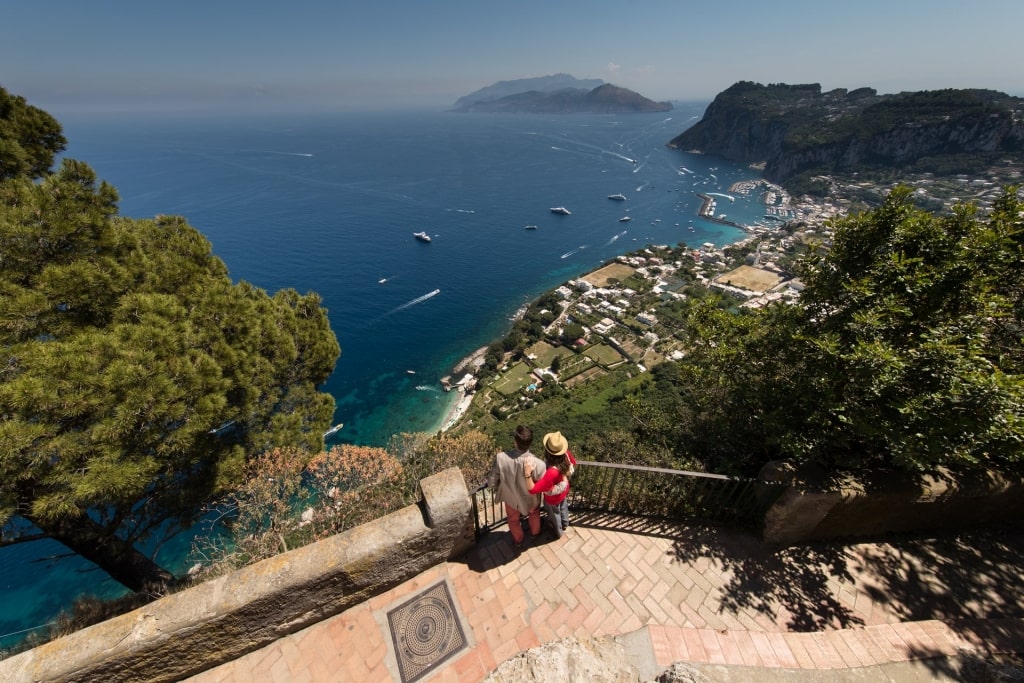
Capri
A stunning projection of limestone rising from the Gulf of Naples, Capri has acquired a reputation as the distillate of Italian glamor. The “Island of Dreams” has attracted Roman Emperors and European Grand Tourists to its turquoise waters and white cliffs. In more recent times, it’s been a magnet for writers, artists, and even Jackie O. The island’s pull is enshrined in myth: it was here, in Homer’s Odyssey, that Odysseus resisted the call of the Sirens by lashing himself to his mast.
Once you arrive, it’s easy to imagine how exasperating it must have been for the Ancient Greek warrior to find himself so bound. The impossibly blue waters insist that you dive in, but probably better to hold off until you’ve arrived on land. As you navigate the switchbacks carved out of the cliffs, you’ll begin to take in Capri’s enchantments.

Blue Grotto, Capri
After looking around the lanes of Capri Town, refresh yourself with an Italian feast, the scent of jasmine softening the breeze on your restaurant terrace. Later, give in to that siren call and explore the miraculous meeting of water and limestone that is the island’s fringe. Take a boat to explore the luminous Blue Grotto—one of the best natural wonders in Italy—a sea cave that seems to summarize what makes Capri so captivating: exclusivity, color, and a dash of magic.
Travel Back in Time at Pompeii
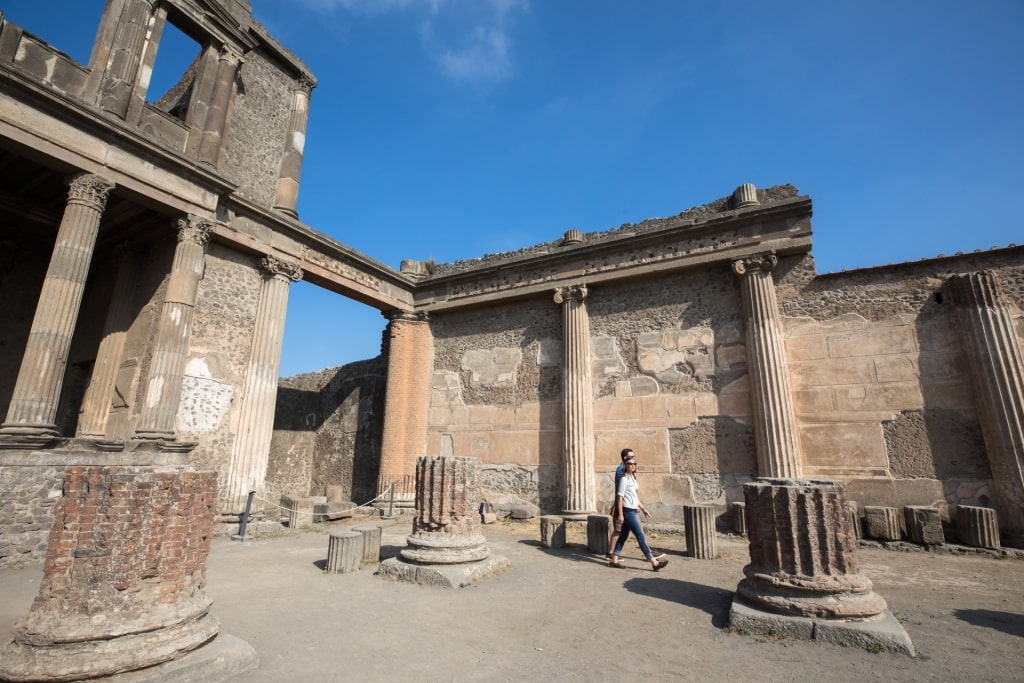
Pompeii
Of the many extraordinary things about the recovered Roman town of Pompeii, one of them has to be its proximity to Naples. The contrast between Naples’ vivid life and ancient Pompeii’s still life is profound.
Profundity is in abundance at this preternaturally preserved Roman habitation. Formerly a well-to-do enclave in the shadow of Mount Vesuvius, it was caught up in a cataclysmic eruption in 79 AD. Such was the suddenness of the event, the town and its people were swiftly buried beneath an avalanche of ash and pumice stones.
It wasn’t re-discovered until the late 1500s when an Italian architect unearthed part of the town while excavating a canal way. However, it was 200 years later that a concerted effort was made to raise it back up to the sunlight. Today, over 100 acres of this Italian landmark have been unearthed, with roughly a third still being explored.
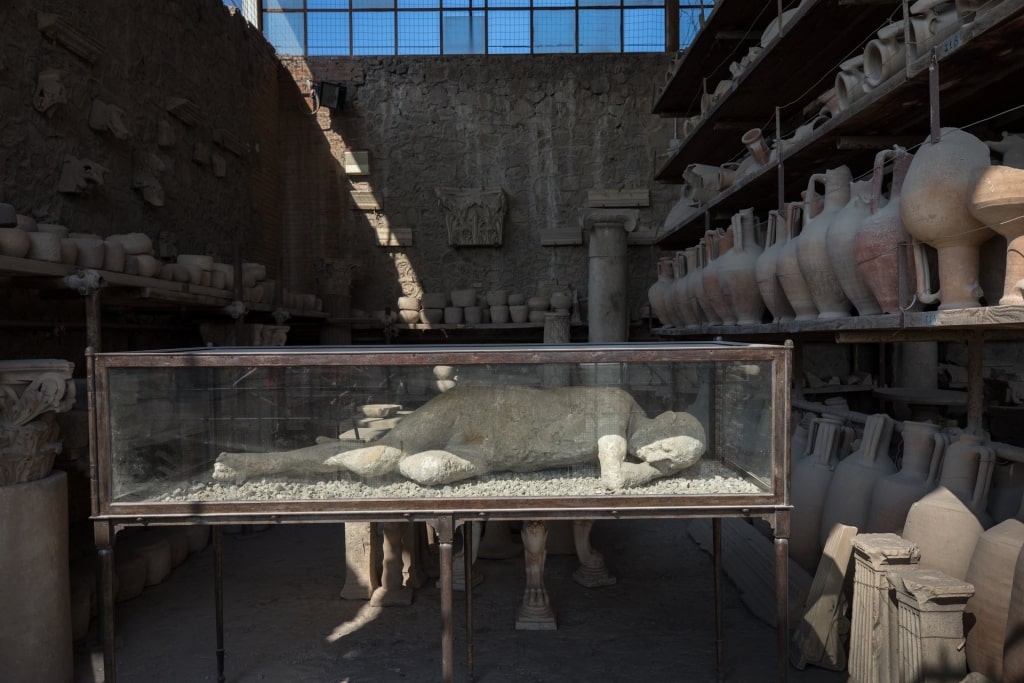
Pompeii
Once uncovered, the world was stunned by how well Pompeii had been preserved in its final moments. You will be too, wandering the streets of this vast open-air museum, which is perhaps the most immersive historical experience one can have. Take a guided tour and walk in the footsteps of the victims’ daily lives—it’s summer in Italy seen through its most thoughtful lens.
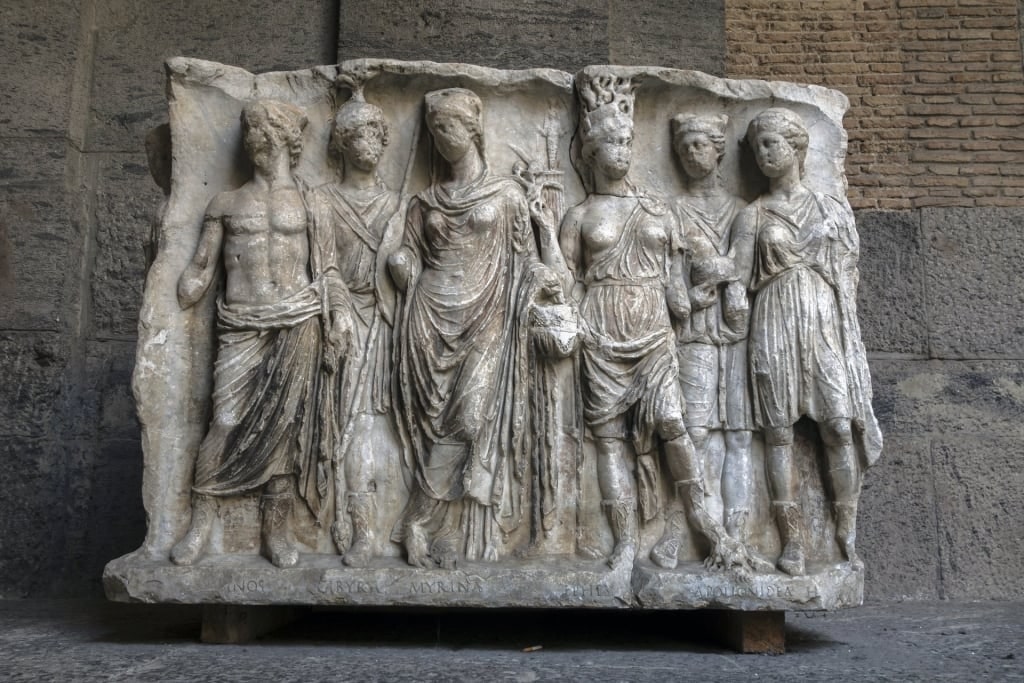
Naples National Archaeological Museum
If you have time, swing by the excellent Naples National Archaeological Museum for some more pieces of the Pompeii puzzle, including statues and frescos rescued from the site to aid in their preservation.
Step into the Sacred Shade of Florence’s Duomo

Duomo, Florence
From the perspective of the lush Tuscan hills surrounding the Renaissance capital of Florence, the Cattedrale Santa Maria del Fiore rises like a hot air balloon from among the terracotta rooftops.
Walking near to Florence’s duomo—to give the building its everyday monicker—you’re struck by its luminous nature. Its exterior white, green, and red marble inlay seems to emanate a gentle light. Wander inside, and the sheer scale of that dome hits home. Completed by the architect Filippo Brunelleschi in 1461, it was the largest in Europe at the time of its construction.
It is possible to ascend the 463 steps to the lantern crowning the dome (during construction, Brunelleschi wisely brought his workers their lunch rather than have them exhaust themselves by making too many trips to ground level). The views at the top are undeniably worth the hike, as well as the close-up perspective of Giorgio Vasari’s magnificent frescos decorating the dome’s interior.

Duomo, Florence
If the climb sounds a little daunting, don’t fret: this is Florence, after all, a museum director’s fever dream of astounding Renaissance art and architecture. There’s plenty available to see with no stairs to climb. If you’re set on seeing more of the duomo, one way of communing with its treasures is to make your way to the Museo dell’Opera del Duomo.
One of the best art museums in Italy, Museo dell’Opera del Duomo recently re-opened after an expensive two-year refurbishment. Inside, you can explore the world’s largest collection of Florentine sculptures from the Medieval and Renaissance periods, as well as the original medieval façade of the Duomo, the museum’s centerpiece.
Dismantled into 100 fragments in the late 16th century, the façade is one of the great works of art that never was. It comprises 40 statues, intricate mosaic inlay, and a galaxy of other sculpted elements.
Experience all of these unforgettable experiences and more on a cruise to Italy. From world-renowned architecture and ancient landmarks to incredible natural vistas, Italy is a magnificent place to visit during summer.
Browse our cruise itineraries online and book an incredible vacation in the Mediterranean.
